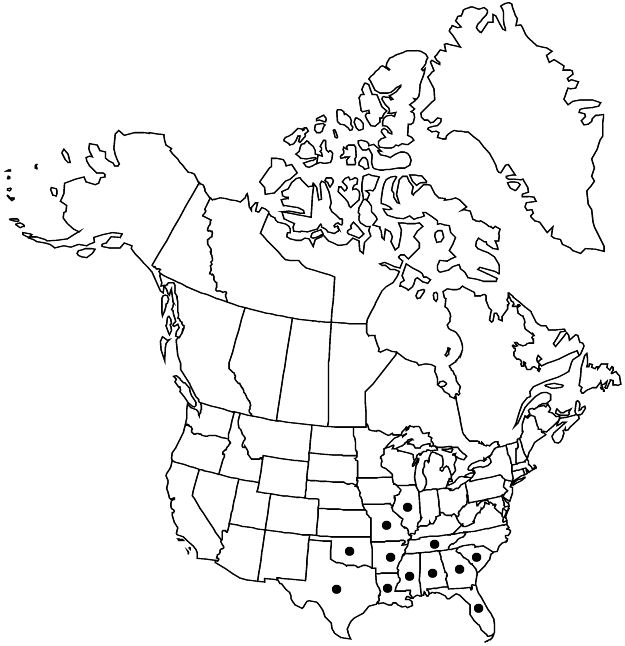Difference between revisions of "Hypericum pseudomaculatum"
Man. Fl. N. States, 627. 1901.
FNA>Volume Importer |
FNA>Volume Importer |
||
| Line 12: | Line 12: | ||
}}{{Treatment/ID/Special_status | }}{{Treatment/ID/Special_status | ||
|code=F | |code=F | ||
| − | |label= | + | |label=Illustrated |
}} | }} | ||
|basionyms= | |basionyms= | ||
| Line 18: | Line 18: | ||
|name=Hypericum punctatum var. pseudomaculatum | |name=Hypericum punctatum var. pseudomaculatum | ||
|authority=(Bush ex Britton) Fernald | |authority=(Bush ex Britton) Fernald | ||
| + | |rank=variety | ||
}} | }} | ||
|hierarchy=Hypericaceae;Hypericum;Hypericum sect. Hypericum;Hypericum pseudomaculatum | |hierarchy=Hypericaceae;Hypericum;Hypericum sect. Hypericum;Hypericum pseudomaculatum | ||
| Line 44: | Line 45: | ||
-->{{#Taxon: | -->{{#Taxon: | ||
name=Hypericum pseudomaculatum | name=Hypericum pseudomaculatum | ||
| − | |||
|authority=Bush ex Britton | |authority=Bush ex Britton | ||
|rank=species | |rank=species | ||
| Line 58: | Line 58: | ||
|publication title=Man. Fl. N. States, | |publication title=Man. Fl. N. States, | ||
|publication year=1901 | |publication year=1901 | ||
| − | |special status=Endemic; | + | |special status=Endemic;Illustrated |
| − | |source xml=https://jpend@bitbucket.org/aafc-mbb/fna-data-curation.git/src/ | + | |source xml=https://jpend@bitbucket.org/aafc-mbb/fna-data-curation.git/src/f50eec43f223ca0e34566be0b046453a0960e173/coarse_grained_fna_xml/V6/V6_180.xml |
|genus=Hypericum | |genus=Hypericum | ||
|section=Hypericum sect. Hypericum | |section=Hypericum sect. Hypericum | ||
Revision as of 22:02, 16 December 2019
Herbs erect or ascending to divaricate, with rooting, sometimes creeping, branching base, 4–9.5 dm. Stems sometimes clustered, internodes not lined, with black glands scattered all over. Leaves usually ascending, sometimes spreading, sessile; blade usually ovate-lanceolate to triangular-lanceolate or narrowly elliptic, rarely ovate, 18–45 × 6–16(–20) mm, base cordate to rounded, margins plane, apex usually acute, rarely obtuse to rounded, midrib with 3–4 pairs of branches, tertiary veins densely reticulate toward margins, black glands intramarginal (dense) and laminar (scattered). Inflorescences subcorymbiform to broadly pyramidal, 16–164(–280)-flowered, subsidiary branches ascending to widely spreading. Flowers 10–20 mm diam.; sepals not imbricate, erect in fruit, lanceolate to ovate or elliptic-oblong, subequal, (3–)3.7–4.9(–6) mm, apex acute; petals yellow, usually obovate, rarely elliptic, 6–14 mm; stamens 38–61; anther gland amber or pellucid; styles 5.4–8.5 mm. Capsules broadly ovoid, 3–6 × 2–4 mm, with longitudinal and lateral vittae or vesicles or only ovoid vesicles (all amber). Seeds not or scarcely carinate, 0.6–0.8 mm; testa linear-reticulate. 2n = 16.
Phenology: Flowering mid summer (Jun–Jul).
Habitat: Open and partially shaded, dry areas of woods, among rocks, fields, roadsides, well-drained soil
Elevation: 100–700 m
Distribution

Ala., Ark., Fla., Ga., Ill., La., Miss., Mo., Okla., S.C., Tenn., Tex.
Discussion
Hypericum pseudomaculatum has been confused with H. punctatum; they are quite distinct and they rarely, if ever, hybridize. The affinities of H. pseudomaculatum are with Mexican H. formosum Kunth.
J. A. Steyermark (1963) recognized two distinct floral forms in Missouri: forma pseudomaculatum with orange-yellow petals and stamen filaments, and forma flavidum in which these parts are pale, creamy yellow. The distribution of these two forms within the whole range of the species is unknown.
Hypericum elatum Aiton (a synonym of H. ×inodorum Miller = H. androsaemum Linnaeus × hircinum Linnaeus) was wrongly cited as from North America by Aiton and was not conclusively recognized as an Old World taxon until J. M. Coulter (1886) published his account of North American Hypericum.
Selected References
None.
